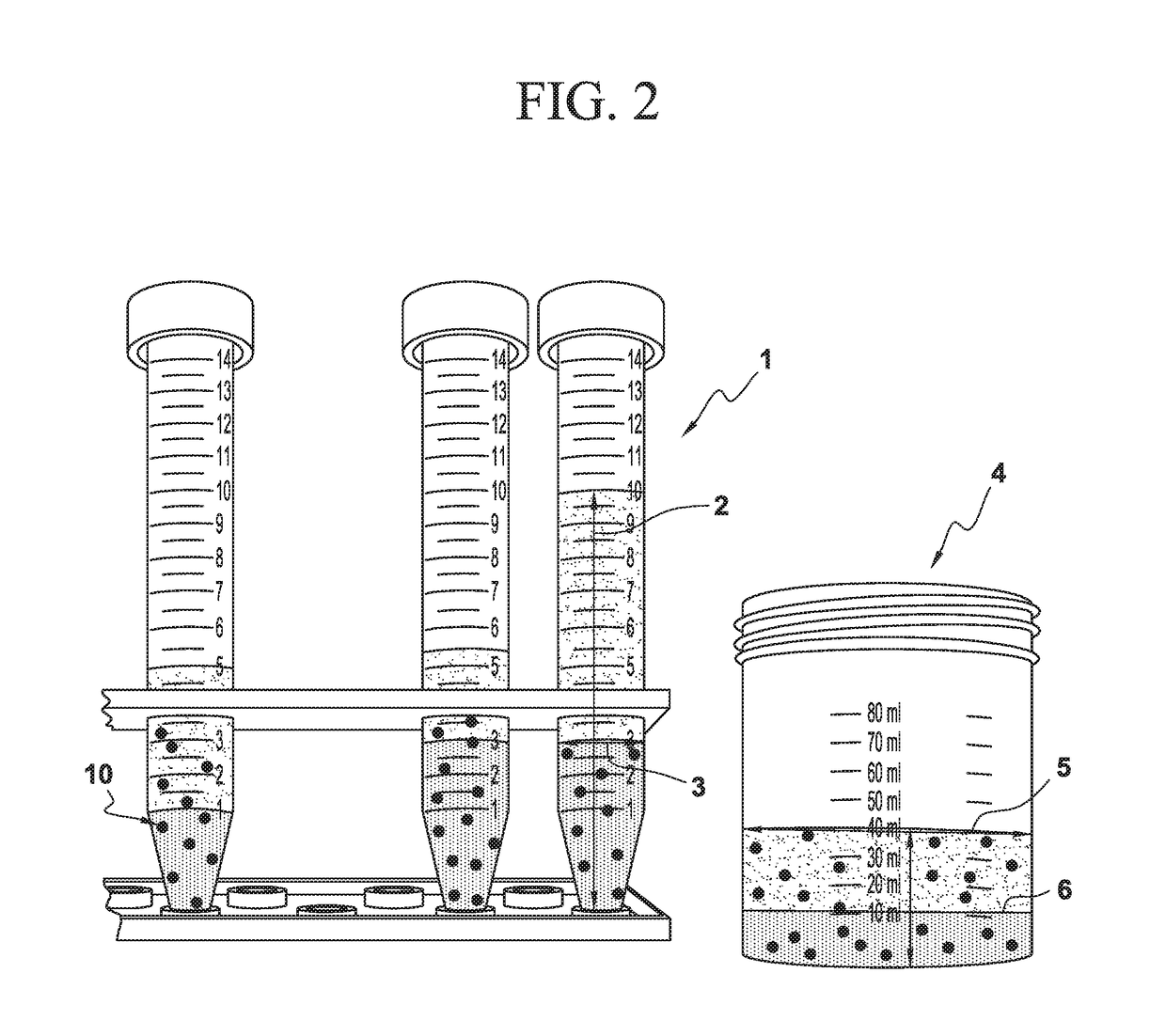Method of estimating blood volume
a blood volume and volume technology, applied in the field of estimating blood volume, can solve the problems of insufficient approximation of blood volume for assessing blood needs, difficulty in estimating the volume of blood included with any degree of accuracy, and difficulty in estimating the volume of blood included, etc., to achieve reliable and accurate approximation of blood volume
- Summary
- Abstract
- Description
- Claims
- Application Information
AI Technical Summary
Benefits of technology
Problems solved by technology
Method used
Image
Examples
example 1
ulants
[0058]The present example presents materials that may be used as RBC flocculants in fluid containing or suspected to contain blood. The following chemicals in Table 1 may be provided as RBC flocculants.
TABLE 1ChemicalsDescriptionsGelatinA solution of electrostatic charged poly-peptides having a widerange of molecular weight. Literature indicates gelatin is able toincrease RBC aggregation after adsorption on a RBC surface.Dextran 80 + CaCl2Literature indicates that Dextran 80 plus a divalent cation likeCa2+ Mg2+, and Ba2+ will increase aggregation of RBCsAcid TreatmentThe isoelectric point of blood is at pH = 4.75-5. The pH changeof blood samples to less than 4.75 will convert RBCs fromnegative to positive surface charge.Polyethylenimine (PEI) withPEI is a polymer composed of large number of positively chargeddifferent molecular weightamine groups, which is expected to attract RBCs to cause RBCsettlement.Polyacrylamide (PAM) withPAM is widely used as a flocculants for water tre...
example 2
[0068]The present example demonstrates the material polyDADMAC as an effective flocculant for RBCs contained in a fluid, and the use of this flocculant for estimating total blood volume in a fluid that contains blood and other liquids, including saline.
[0069]High-molecular weight (at least 100, 200, 300 or 400 KDa) research-grade polyDADMAC was obtained from Sigma-Aldrich (Catalog number 409022 or 409030) along with industrial-grade polyDADMAC. The industrial-grade product is commercially available from Kemira Chemical under the product name “Superfloc C-591”, which contains a 20% concentration of polyDADMAC. This material is used in water treatment. Studies were performed to compare the effectiveness between the research-grade and industrial-grade products. The studies revealed that the Superfloc C-591 produced similar results in RBC sedimentation as the research-grade product. The cost of the industrial-grade product is lower than that of the research-grade product. Th...
example 3
lection Canister
[0095]The present example demonstrates the preparation of a particular fluid collection container with a RBC flocculant.
[0096]Blood Containing Liquid Collection Container. The fluid collection container used in the following examples was a 1200-ml suction canister, shown in FIG. 7B. To this canister (1), a flocculant was applied, polyDADMAC, which appears as a film of dispersed flocculant particles (2) on the bottom and walls of the canister.
[0097]Flocculant—PolyDADMAC. Kemira's “Superfloc C-591” was used as the source of polyDADMAC. The quality or purity of this product was not consistent. Therefore, the Sigma-Aldrich version of high-molecular weight (200-350 KDa) 20% polyDADMAC (Sigma Catalog #409022) was used. The results indicate that the Sigma version of polyDADMAC significantly improve the testing results. However, it is anticipated that virtually any number of different sources flocculants may be used in the practice of the present invention, as well as in the...
PUM
| Property | Measurement | Unit |
|---|---|---|
| volume | aaaaa | aaaaa |
| volume capacity | aaaaa | aaaaa |
| volume capacity | aaaaa | aaaaa |
Abstract
Description
Claims
Application Information
 Login to View More
Login to View More - R&D
- Intellectual Property
- Life Sciences
- Materials
- Tech Scout
- Unparalleled Data Quality
- Higher Quality Content
- 60% Fewer Hallucinations
Browse by: Latest US Patents, China's latest patents, Technical Efficacy Thesaurus, Application Domain, Technology Topic, Popular Technical Reports.
© 2025 PatSnap. All rights reserved.Legal|Privacy policy|Modern Slavery Act Transparency Statement|Sitemap|About US| Contact US: help@patsnap.com



